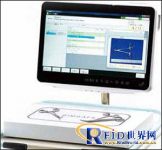
Shimane University Hospital deploys RFID system to strengthen medical device management
[ad_1]
For medical workers, surgical instrument management has always been a challenge. During cleaning, disinfection, and surgery, these small machines are easily lost. This is a very big threat to the health of patients. Unsterilized medical equipment can cause infection.The solution provider company KRD said that two Japanese hospitals have deployedRFIDThe system can track the equipment during the cleaning and disinfection process.
In 2011, Shimane University Hospital took the lead in deploying KRDC’s Surgical Instrument Safety System (SIMSAFE). Then, the Japanese Red Cross Medical Center also deployed a similar plan. Next year, the Kochi Medical College Hospital will also deploy the SIMSAFE system.
In 2011, Shimane University Hospital expanded and deployed RFID solutions to track medical devices. With this solution deployed, the hospital staff’s surgical instrument search time has been reduced from 1-2 hours by a few minutes and the risk of errors has been reduced. According to Tsutomu Sawa, vice president of KRDC’s development department, SIMSAFE allows hospitals to know when medical devices enter the operating room.

Shimane University Hospital also deployed SIMSAFE software to integrate data analysis functions to let employees know what surgical instruments they need to use. The software reduced the hospital’s inventory by 20%, improved the efficiency of tool search, and reduced operating costs.
Shimane University Hospital will perform approximately 20 operations per day. The hospital has 190,000 surgical instruments, including scalpels, needles and various special jigs. These tools are stored in the central supply room of the hospital, which has 5 different cleaning equipment and 8 disinfection equipment. These instruments are contained in metal containers.
Before deploying an RFID system, hospital staff need to manually record the location and status of the tool, which is a time-consuming process. Sometimes, staff need to look for a lost instrument in the operating room and cleaning and disinfection area. This meaningless behavior is even more time-consuming.
In 2009, KDRC introduced passive high-frequency 13.56MHz RFID ceramic tags to track medical devices. A year later, the company launched SIMSAFE, which includes KRDC tags and software, RFID readers that can be connected to Advantech HIT-W121 or UTC-520 display terminals (used to read sterilization, cleaning areas, storage location marking device tags) information). KDRC also provides a handheld PDA device to receive the data transmitted by the reader.
In 2011, Shimane University Hospital began to install SIMSAFE ceramic RFID tags on every medical device and metal container. The size of the label ranges from 6mm*5mm*2.5mm to 7.4mm*6.5mm*2.6mm. A metal ring is welded on the edge of each device or container for placing RFID tags. After the operation schedule is confirmed, the staff can obtain the required equipment list from the SIMSAFE software vendor according to the patient ID number.

In the process of loading the equipment into the metal box, the staff uses the SIMSAFE reader to read the device tag ID code and the M3 handheld reader to read the container tag. Once the wrong container is loaded, a warning will pop up on the terminal LCD screen. Sawa said that convenience is the main factor in using a handheld reader to read container labels.
After loading the container, the container will be sealed, placed on a trolley and sent to the storage area. A KRDC reader and antenna are installed at the entrance of the storage area to obtain the ID number of the container and the equipment inside. If it is placed incorrectly, a warning will be automatically issued on the display. When shipped out of the storage area, the label information deployed to will be automatically deleted at the entrance to update the status.
In the operating room, staff usually use another SIMSAFE reader to read the information about the instrument to be used to prevent errors. After the operation is completed, the staff needs to re-read all the instruments. If the tools are found to be missing, the system will issue a warning.
After the operation, the instruments will be sent for cleaning and disinfection, and the system will track them. After the disinfection is complete, the staff needs to use a reader connected to the Advantech terminal to read the tag information of the tool. Next, the staff in the sterilization room will use the M3 mobile reader to read the container label to update the sterilization status. In this way, the hospital can avoid the leakage of cleaning.
Sawa said that the system not only reduces the chance of errors but also improves efficiency. Before installing this system, two-thirds of employees would spend 5-6 hours a day preparing equipment. Now, this time has been reduced by 75% and this has resulted in annual savings of $300,000 for the hospital.
By analyzing the data collected by the SIMSAFE system in the past year, the hospital has increased the utilization rate of medical equipment. Sawa said: “Because of the shortening of the time to find equipment, it is possible to perform more operations without increasing the staff.”
[ad_2]



